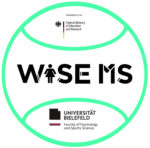
Publication and citation data from nine scientific journals were gathered for the period 2006 to 2020. The nine journals are the following :
Sport economics:
Journal of Sports Economics (JSE)
International Journal of Sport Finance (IJSF)
Contemporary Economic Policy (COEP; only sport articles)
Economic Inquiry (EI; only sport articles)
Sport management:
Sport Management Review (SMR)
European Sport Management Quarterly (ESMQ)
Journal of Sport Management (JSM)
Sport sociology:
European Journal for Sport and Society (EJSS)
International Review for Sociology of Sport (IRSS)
The analysis is based on this comprehensive hand-collected dataset and will examine empirically possible gender differences in publications and citations and identify further factors driving the number of citations. The visibility of the publication is measured by the number of citations from the date of publication (date of online first version) up to and including 2022. Thus, each publication is published for at least two years and can potentially be cited in other papers over this period. This period is based on the period used to calculate impact factors for journals. Citations per publication are collected using Google Scholar. Here, a narrow and thus comparable time window is chosen for the survey for all publications. In addition to the citations per publication, the H-index of all authors is collected (also via Google Scholar), which is another measure of the citation success of scientists. The inclusion of the H-index provides a more comprehensive analysis of the citation success of scientists.
What do we already know about the gender publication and citation gap?
Possible gender differences in publication success and citations have already been researched from different perspectives and for different disciplines. For example, previous studies by publishers document that women in academia publish less on average than their male colleagues and their citations are also lower (Elsevier, 2015, 2017), resulting in lower visibility of their research output. Cross-disciplinary, international studies indicate that the rise of women in science has been accompanied by a widening of the gender gap in publication productivity and citation impact (Huang et al., 2020). Overall, gender differences in publication success in favor of men have been demonstrated in various scientific disciplines such as mathematics, chemistry (Abramo et al., 2009), biology (Laurance et al., 2013), and psychology (Mayer & Rathmann, 2018). With regard to citations, gender differences in favor of men were partially evident (Symonds et al., 2006), but not in all studies (Penas & Willett, 2006).
In a first step of this project, we provide an annual overview of the gender composition of authors of sport articles in the above mentioned journals.
What do we already know about the causes?
Causes for the evident gender differences in publication success and citations are a lower specialization of women in their research areas and a higher time commitment to teaching sein (Jaksztat, 2017; Leahey, 2007). In addition, family responsibilities and childcare have been identified as another determinant of the gender gap to the disadvantage of women (Aiston & Jung, 2015; Hunter & Leahey, 2010). Another cause is that only a few women hold high-ranking positions such as professorships and have fewer collaboration networks than men, which are crucial for sustained publication success (Larivière et al., 2011).


